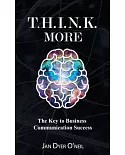Part of a three-volume series from the Tools and Methodologies Working Group of the International Association of Innovative Professionals, this book outlines 23 evolutionary or improvement
tools and methodologies used in innovation: 5 why questions, affinity diagrams, attribute listing, brainwriting 6-3-5, cause-and-effect diagrams, the creative problem solving model, design for
X, flowcharting, force field analysis, Kano analysis, nominal group technique, plan-do-check-act, reengineering/redesign, reverse engineering, robust design, SCAMPER (substitute, combine,
adapt, modify, put to another use, eliminate, and reverse), simulations, six thinking hats, social networks, solution analysis methods using FAST (functional analysis system technique),
statistical analysis, tree diagrams, and value analysis. Practicing innovators describe each tool and its definition, user, what phases of the innovation process it is used in, how it is used,
examples of its outputs, and software to maximize its effectiveness, with some case studies. Annotation ©2016 Ringgold, Inc., Portland, OR (protoview.com)





















